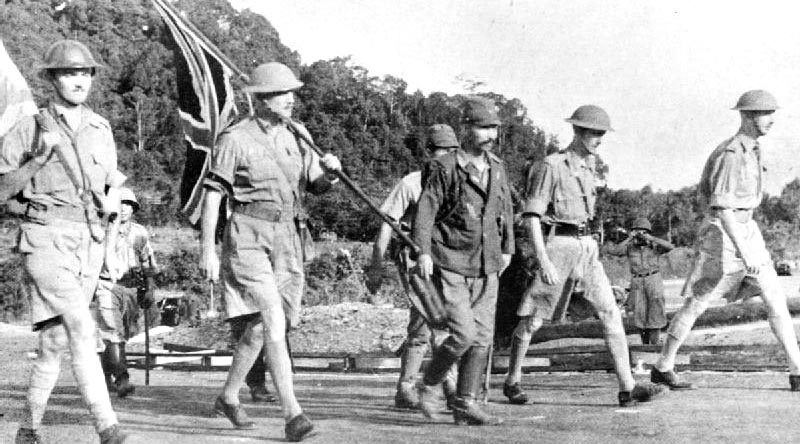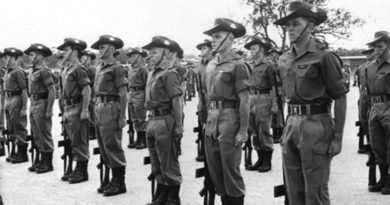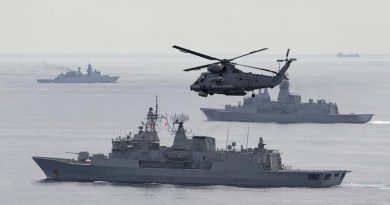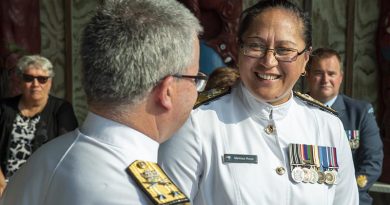80 years since the Fall of Singapore

Today we commemorate the 80th anniversary of the Fall of Singapore, one of the most significant military defeats in British and Commonwealth history.
FILE PHOTO: Lieutenant-General Arthur Ernest Percival, led by a Japanese officer, walks under a flag of truce to negotiate the capitulation of Allied forces in Singapore, on 15 February 1942. It was the largest surrender of British-led forces in history.
More than 20,000 Australians served in the Malayan Campaign and the Battle for Singapore during the Second World War, with more than 1700 killed and another 1300 wounded.
Some 15,000 Australians were among the 130,000 Allied personnel taken as prisoners of war, with more than 7000 perishing in captivity by the time the war was over.
Minister for Veterans’ Affairs and Defence Personnel Andrew Gee said the Fall of Singapore sent shockwaves through Australia and the Commonwealth.
“After the Japanese forces crossed the Straits of Johore and landed on the north-western part of Singapore on 8 February 1942, it was just eight days before British and Commonwealth troops were forced to surrender,” Minister Gee said.
“Though there was some fierce fighting, the Allied defence was disorganised and the Japanese forces took many of Singapore’s key facilities, including the island’s water reservoirs and all but one airfield.
“With water running out, dwindling stocks of ammunition and fuel, and many civilian casualties, British commander General Arthur Percival unconditionally surrendered.
“But there was confusion among the Australian troops on the island, with some believing the Japanese had retreated, only to soon find it was the Allies who had surrendered and they were now prisoners of war.
“None of us can truly imagine the horrors faced by those taken prisoner and, as we remember the Fall of Singapore today, their suffering should be front of mind.
“The sinking of the SS Vyner Brooke and the terrible slaughter of civilians, soldiers and nurses who were evacuating Singapore, also stands out as one of the darkest chapters of the campaign.
“The fall of Singapore left Australia vulnerable, and just four days later, Japanese forces brought the war to the Australian mainland with the bombing of Darwin.
“Today we remember and honour all those who fought in the defence of Singapore, in the face of great adversity.
“We pay tribute to the immense sacrifice of those who lost their lives, and their families, and to those who endured harsh conditions and deprivations as prisoners of war during 1942-1945.”
Background:
Allied forces were ordered to lay down their arms at 8:30pm on 15 February 1942, which came as a shock to many.
Gunner Ronald Houlahan from the 2/15th Field Regiment described his confusion when he learned of the capitulation:
‘At 1530 hours we get cease fire orders [and] believe that peace negotiations are going on. Just after dark we are moving, we are told, into a smaller perimeter near Tanglin Barracks. A lot of ammo is left behind. Along the road we hear lots of rumours that the Japs have retired and we are going forward. The CO’s driver told me the peace terms have been signed between Britain & Japan. But soon we learn the truth. We have to line all the guns & trucks up at the gardens. All called together by our T C [troop commander] and were told we were prisoners of war.’
[Houlahan diary, 15 February 1942, AWM PR88/052]
Gunner Houlahan’s impressions of that day are typical of the confusion felt by many on the island.
While many Australians and other Commonwealth troops were now prisoners of war, there had been evacuations from Singapore since late January 1942, including civilians, military nurses, and wounded, injured and sick troops.
Some managed to make it back to Australia, while others were not so fortunate.
SS Vyner Brooke set sail with evacuees on 12 February 1942, but was attacked a few days later and sunk. Some who survived the sinking managed to reach the shores of the Japanese occupied Bangka Island, which lies off Sumatra, Indonesia. They joined those who had reached the island from other sunken ships. Many surrendered to the Japanese and became prisoners.
Those who came ashore on Radji Beach however met a very different fate. There a large group of civilians and military personnel sought to surrender, but the Japanese separated the men, who were taken behind a headland and killed, before ordering twenty-two nurses from Vyner Brooke to wade into the ocean and machine gunning them.
These events became known as the Bangka Island massacre. Sister Lt Vivian Bullwinkel and a British soldier, both wounded, were the only survivors. After several days in hiding they gave themselves up. While the soldier died shortly after surrendering, Sister Bullwinkel was taken into captivity and endured three years as a prisoner of war.
Those who surrendered on Singapore were held captive, firstly at Changi and, as the war continued, in locations across South East and East Asia, including Japan.
More than 8000 Australians captured by the Japanese on Singapore and in other parts of the Pacific theatre died in captivity over the next three-and-half years.
.
.

.
.





